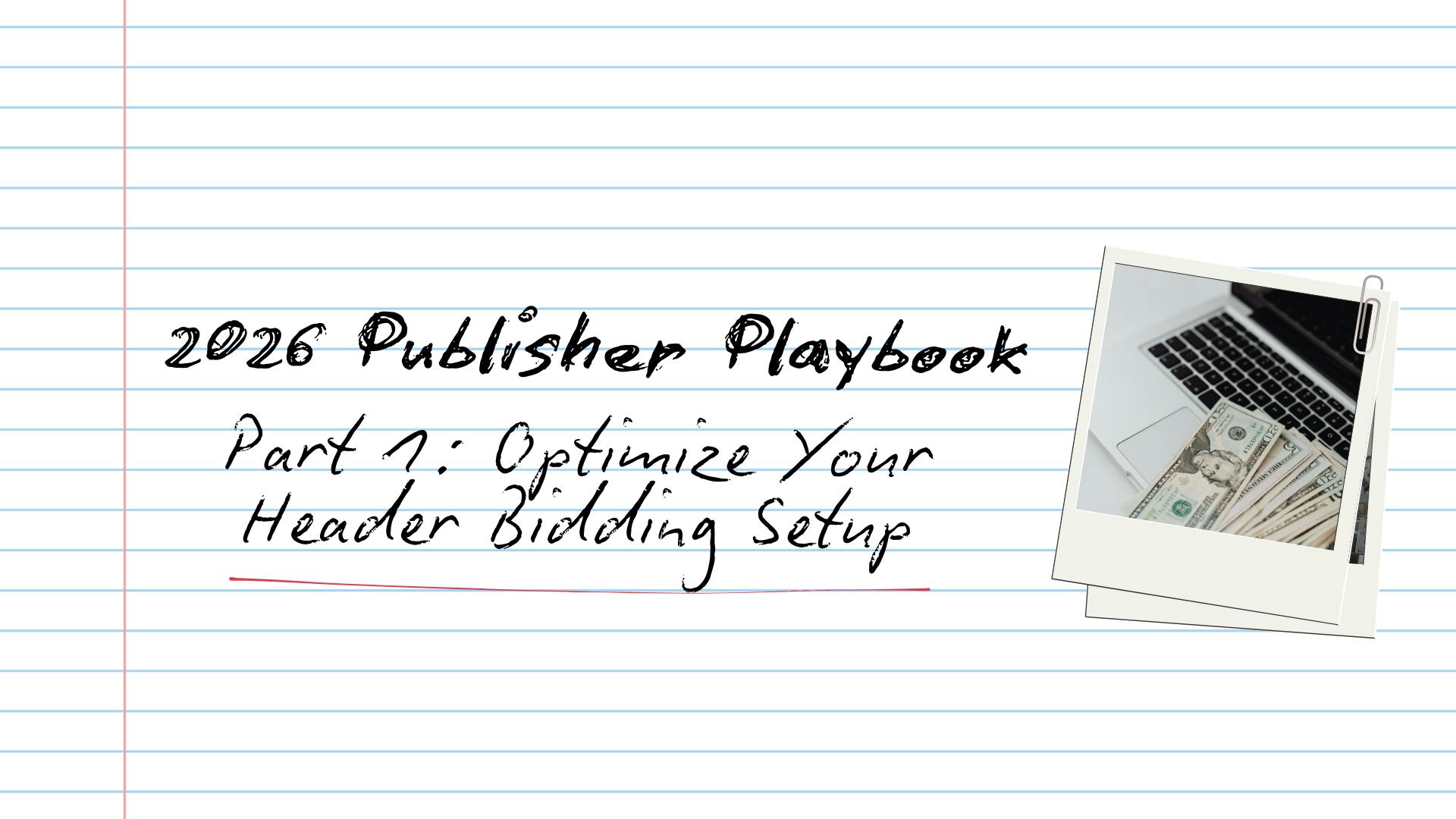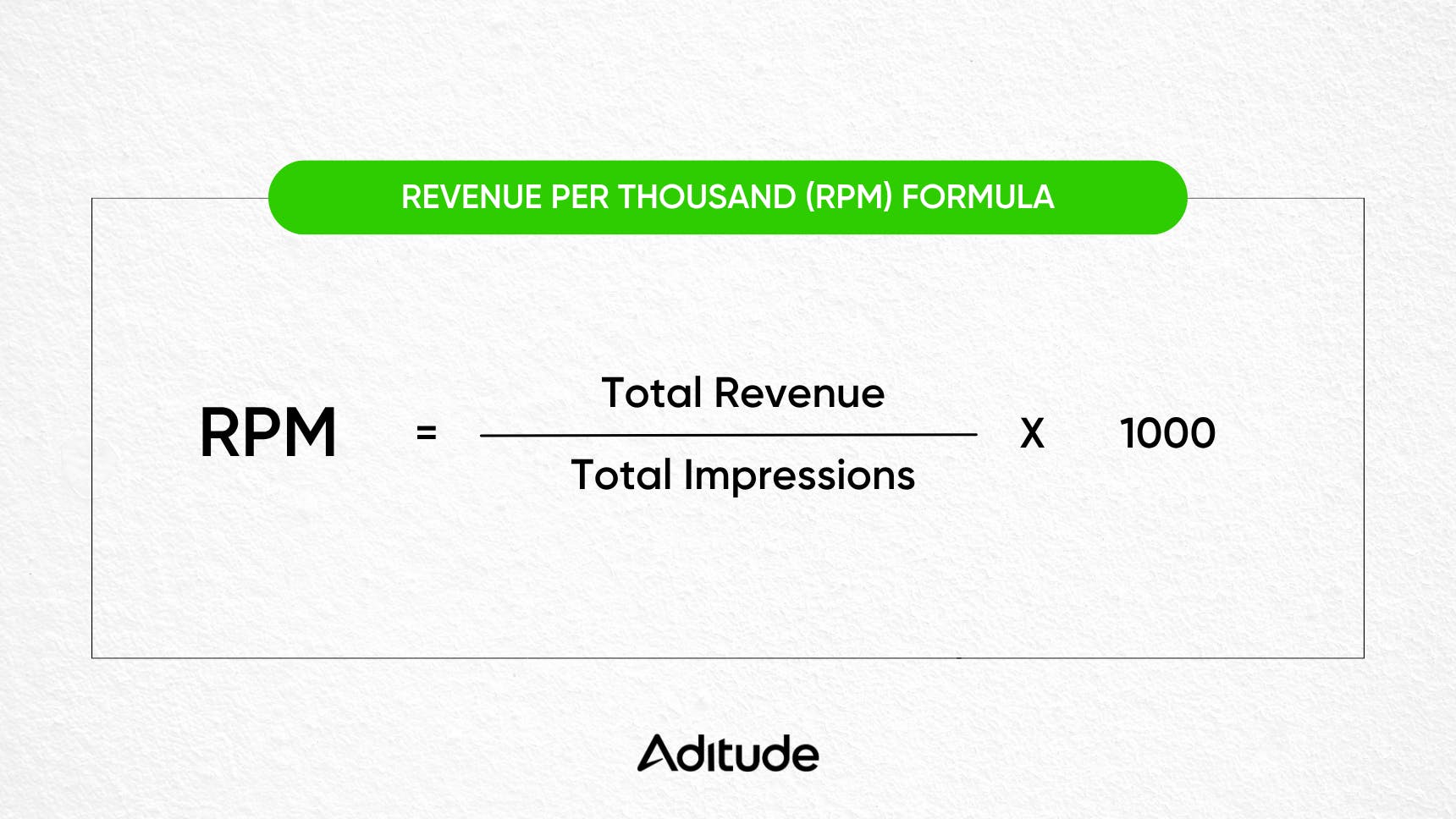2026 Publisher Playbook - Part I: Optimize Your Header Bidding Setup
Header bidding optimization isn't about chasing the latest industry debates. It's about mastering the fundamentals that consistently drive revenue. Part 1 of Aditude's 2026 Publisher Playbook cuts through the noise to focus on what actually matters: timeout configurations, partner prioritization, and testing frameworks that can unlock 15-30% yield improvements without adding technical complexity.

As we approach 2026, publishers face a critical decision: chase the latest industry controversy or focus on the fundamentals that actually drive revenue. While the ad tech world debates Transaction IDs and other technical specifications, smart publishers are quietly optimizing their core monetization strategies and seeing double-digit yield improvements.
The reality? Most publishers are leaving significant revenue on the table—not because they lack the latest technology, but because they haven't mastered the basics. This four-part Publisher Playbook series breaks down the essential strategies you should prioritize heading into 2026. In this first instalment, we're diving deep into header bidding optimization—the foundation of modern publisher monetization.
Optimize Your Header Bidding Setup: The Foundation of Modern Monetization
Header bidding revolutionized publisher monetization by enabling simultaneous competition among multiple demand sources. Yet despite widespread adoption, most publishers operate with suboptimal configurations that quietly suppress revenue by 15-30%. The difference between a properly configured wrapper and a neglected one can mean hundreds of thousands—or even millions—in lost annual revenue.
The Configuration Gaps Costing You Money
Timeout Settings: The Balancing Act
Your wrapper timeout setting represents one of the most critical yet overlooked parameters in your entire monetization stack. Set it too low, and high-value demand partners never get a chance to bid. Set it too high, and you sacrifice user experience while lower-value bids flood in.
Most publishers use default timeout settings of 1000-1500ms without ever revisiting them. However, optimal timeouts vary dramatically based on your traffic profile, geographic mix, and partner composition. Publishers serving primarily US traffic might optimize at 800ms, while those with significant international audiences may need 1200ms to accommodate longer network latencies.
The solution? Implement timeout testing protocols:
- Run A/B tests with 10-15% of traffic at varied timeout windows (700ms, 900ms, 1100ms)
- Analyze revenue per thousand impressions (RPM) against page load impact
- Consider dynamic timeouts that adjust based on device type, geography, and time of day
- Monitor partner-level timeout rates to identify consistently slow bidders
Partner Prioritization and Bid Density
Not all SSP partners deliver equal value, yet most publishers treat them identically in their wrapper configuration. This one-size-fits-all approach leaves money on the table by failing to optimize for each partner's strengths.
Analyze your partner performance across multiple dimensions:
- Fill rate by device, geography, and content category (via custom parameter in Insights)
- Average CPM and bid density (number of bids per auction)
- Timeout rates and technical reliability
- Win rate (how often their bids actually win)
Use this data to create intelligent priority tiers. Your highest-performing partners should receive preferential timeout allocations, while underperforming partners might be limited to specific inventory types where they excel.
Bid Caching and Refresh Strategies
Advanced publishers leverage bid caching to reduce latency while maintaining competitive auctions. When implemented correctly, cached bids can improve page performance while preserving—or even increasing—revenue.
Key caching considerations:
- Cache duration should balance freshness against latency benefits (typically 30-60 seconds)
- Implement cache invalidation for high-value inventory where real-time competition matters most
- Use selective caching based on ad unit performance and placement visibility
- Monitor cache hit rates and adjust strategies based on actual utilization
Transaction IDs: The Latest Industry Debate
The ad tech industry recently erupted over Transaction IDs (TIDs)—unique identifiers that help buyers recognize when they're bidding on the same impression across multiple supply paths. The controversy has generated endless LinkedIn debates, IAB statements, and heated arguments between buyers and sellers.
Aditude's Stance: Stop the Distraction
Transaction IDs are a distraction from the real work of building a sustainable ad tech ecosystem. While everyone argues about technical specifications, publishers would be better served focusing on content quality, user experience, and direct monetization strategies that actually drive sustainable revenue.
That said, we're pragmatic. Our Cloud Wrapper supports TID implementation because major buyers, such as The Trade Desk, require it, and maintaining strong demand relationships is crucial. But we implement it as a basic technical standard—one checkbox among many in a comprehensive header bidding setup—not some revolutionary breakthrough deserving weeks of industry debate.
The reality? Proper TID implementation requires even less effort than correctly configuring your timeout settings. It's table stakes, not a strategy. Instead of obsessing over TIDs, focus on the fundamentals that consistently drive results: optimize your wrapper configuration, implement intelligent price floors, and improve site performance.
While others argue about specifications, you'll be improving what actually matters.
Q4 Testing Framework for Header Bidding Optimization
If you're hesitant to make major changes during Q4—historically the highest-revenue quarter—implement a controlled testing framework:
Week 1-2: Baseline Measurement
- Document current timeout settings, partner configuration, and performance metrics
- Establish a control group (80% of traffic) versus a test group (20% of traffic)
- Implement comprehensive tracking for RPM, fill rate, latency, and user engagement
Week 3-4: Timeout Optimization Tests
- Test 2-3 timeout variations against control
- Monitor both revenue metrics and Core Web Vitals impact
- Identify a winning configuration for full deployment in Q1 2026
Week 5-6: Partner Configuration Tests
- Adjust partner priority based on performance data
- Test selective bid caching strategies
- Measure impact on auction competitiveness and yield
Week 7-8: Analysis and Planning
- Compile results and calculate projected annual impact
- Develop the Q1 2026 rollout plan based on winning tests
- Present the business case to stakeholders with concrete data
This cautious approach lets you validate improvements during Q4 without risking your critical revenue period, while positioning you for immediate gains in Q1.
Key Takeaways
Optimizing your header bidding setup represents the foundation of effective publisher monetization, but it's only the first piece of the puzzle. Once you've configured your wrapper for maximum efficiency, the next step is implementing intelligent pricing strategies that adapt to real-time market conditions.
In Part 2 of our Publisher Playbook series, we'll explore dynamic price floors—moving beyond static pricing to capture maximum value from every impression. We'll cover the mathematics of floor optimization, phased implementation strategies, and common mistakes that cost publishers millions in lost revenue.
Ready to start optimizing your header bidding configuration? Reach out to our team to learn how Cloud Wrapper can help you master these fundamentals without the technical complexity.




